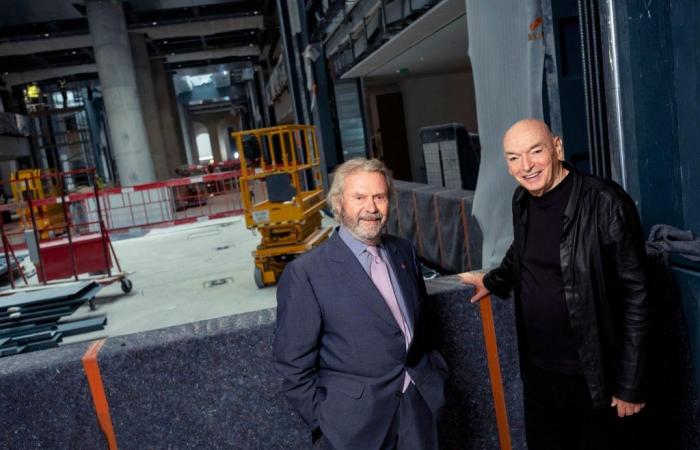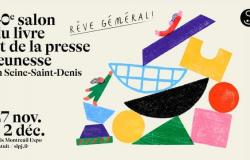Paris Match. The Cartier Foundation is celebrating its 40th anniversary and will inaugurate new exhibition spaces at the end of 2025, Place du Palais-Royal. What will become of the building located on Boulevard Raspail?
Alain Dominique Perrin. The subject is not on the table at the moment. Events are planned through 2026-2027. The future of this glass showcase depends above all on Groupama, owner of the walls. In the heart of the historic Palais-Royal district, we are creating an exhibition and living space. There will be a restaurant, a bookstore, an amphitheater, offices… The building, built in 1855 as the Grand Hôtel du Louvre, then converted into the Louvre des antiquaires in 1978, is 150 meters long by 50 meters wide . Thus, 8,500 square meters will be accessible to the public, including 6,500 square meters of exhibition.
Is it to compete with the two giants of contemporary art, the Louis Vuitton Foundation and the Bourse de Commerce-Pinault Collection, that you chose to set up in the heart of Paris?
A.D.P. No, it’s totally a coincidence. At the beginning, our financial director, a lifelong friend, suggested that I create something at the Louvre des antiquaires, a place that people in contemporary art rarely dream of. I had dinner with Jean [Nouvel]we discussed it. From what I had seen of the project, we were offered a courtyard… We had a good meal and, when we came out, we were determined to acquire the entire ground floor and not just a little thing in a corner! Jean came back to me very quickly, the project he imagined made it possible to offer visitors, as well as passers-by, new perspectives on the city.
When a place no longer makes sense, it must be given back
Jean Nouvel
Jean Nouvel. The idea is linked to the future of Paris and what has been happening there for a long time. For decades, the capital has had and still has difficulty keeping its heritage alive. Many things remain breeding dust… But most of the world’s great architectural compositions are based on several centuries, visions and overlaps. When you have a place that no longer makes sense, you have to give it back some meaning. It was from there that we started to ‘deliriously’ with Alain Dominique. This place is an opportunity, it should not be trivialized. And then there were some constraints to take into account, the building is listed and there are offices above.
The rest after this ad
What caught your attention the most as an architect?
J.N. The arcades and the fact that you can walk around the building like in a peristyle. What I put in my head was that the person who passed in front of this space had to see what was happening inside, not out of exhibitionism, but to signal that there is life and that it is mysterious. Please note, it is not a question of making this site a showcase, in fact it is quite the opposite. I see it more as a kind of puzzle because new architectural parts will appear. We have developed a varied and surprising system: five mobile platforms will allow the exhibition areas and routes to be modified. Artists and curators will be able to play with this moving tool, creating verticalities up to 13 meters high. The devices will change with the exhibitions. It’s a multiple scene, like in the theater.
A.D.P. It’s also a continuation of what we did on Boulevard Raspail. We are in transparency, the interior-exterior vision, always. And it’s been thirty years since you taught us to live without picture rails!
The architect imagined his project as a dialogue between the historical and urban contexts of the place.
Paris Match
/
© Julien Faure
Was it obvious to contact Jean Nouvel?
A.D.P. I know him well and I know roughly what will happen to us… [Rires.]
J.N. Do you know what he dared to answer me when I asked him what he expected of me when I started work on the building on Boulevard Raspail, thirty years ago? A monument of Paris!
A.D.P. And you succeeded! By working on the transformation of a historic building on Place du Palais-Royal, you are setting in motion the architectural revolution of an entire neighborhood and a starting point for developing its culture. I was an antique dealer, I had two stands here and it was incredibly sad. This building looked a bit like a barracks… From now on, it will come back to life and will be an atypical space for experimentation.
Some refused to exhibit anywhere other than us. And that’s a real victory
Alain Dominique Perrin
Will this be an opportunity to show the collections of the Fondation Cartier, rich in 4,000 works designed by more than 500 artists?
A.D.P. There is nothing more fixed than a collection, it is an accumulation… But, yes, we will exhibit a large part of it. Above all, it is the work of creation and discovery that must continue. When you present, in the same term, maths and trees as we did, it’s not very academic and that’s why we are here today! The Cartier Foundation on Boulevard Raspail remains the base, that’s where everything starts. The first artists found the place magnificent but did not know where to hang their works. Now they want more and it’s like a family home. David Lynch, Kitano, Ron Mueck, Patti Smith, Damien Hirst, Raymond Depardon, Lou Reed… all return to the scene of the crime even if they have nothing to do there, because they are happy there. Some refused to exhibit anywhere other than us. And that’s a real victory.
It looks like Warhol’s Factory at home!
A.D.P. A little… but better!
How do you imagine the Cartier Foundation in forty years?
J.N. Place du Palais-Royal, things will happen that will raise questions.
A.D.P. Jean and I will no longer be there but Cartier will, because it is a major player in contemporary art. The house will not stop its role as patron, it is a passion. I insist: what makes our identity is the unique relationship with our artists. On our first site, inaugurated in 1984 in Jouy-en-Josas, I remember César working on his gigantic ‘Homage to Eiffel’, more than 3 meters high. I saw him every day, he had the reputation of never letting go of his work, constantly returning to it. I shouted to him: ‘Oh Caesar, I want you to finish!’ He replied: ‘You’re pissing me off!’ His sculpture was becoming an eyesore… So the ladder was taken away from him and he was left on his perch bawling. We played for twenty-five minutes. When he came back down, I said to him: ‘Take a good look at your sculpture because you’ll never get back on it!’ What a laugh… On the day of the inauguration, he told me: ‘Perrin, you were right!’






